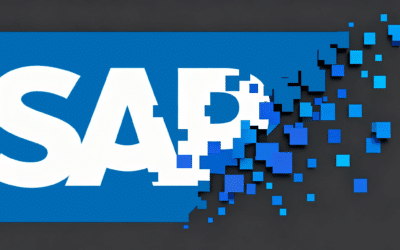
Which Release Cycle is Better: Monthly or Quarterly?
MAR, 2023
by Andrew Walker
Author Andrew Walker
Andrew Walker is a software architect with 10+ years of experience. Andrew is passionate about his craft, and he loves using his skills to design enterprise solutions for Enov8, in the areas of IT Environments, Release & Data Management.
In the fast-paced world of product lifecycle management, timely and efficient release cycles are critical to the success of any project. A well-planned release cycle can help ensure that a software product is delivered to the market in a timely and predictable manner, with new features and improvements that meet the needs of customers. However, choosing the right release cycle for your organization can be challenging, as there are several factors to consider. One of the most fundamental decisions is whether to have monthly or quarterly release cycles.
Enov8 Enterprise Release Manager
*Innovate with Enov8
Streamline delivery of IT change through embracing “Scaled Agile” best practice.
In this article, we will explore the benefits and drawbacks of both options and provide guidance on how to choose the best release cycle for your team and product.
Benefits and Drawbacks of Monthly Release Cycles
Monthly release cycles, as the name suggests, involve releasing new versions of software every month. This approach has several advantages, including:
- Faster Feedback: With monthly release cycles, developers can receive feedback on their work more frequently. This helps them identify and fix issues quickly, improving the overall quality of the software.
- Shorter Time-to-Market: Monthly releases allow teams to get new features and improvements to customers faster. This can help keep up with rapidly changing customer demands and stay ahead of the competition.
- Increased Agility: By releasing updates more frequently, development teams can be more responsive to changing market conditions and customer needs.
However, there are also some drawbacks to monthly release cycles, including:
- Lower Quality Releases: With less time for testing and development, it can be challenging to ensure that each release is of the highest quality.
- Increased Workload: Monthly release cycles can put significant pressure on development teams to deliver new features and improvements within a short timeframe.
In the end, the decision to use monthly release cycles will depend on factors such as the complexity of the product and the capabilities of the development team. While the benefits of faster feedback and shorter time-to-market may be appealing, it is important to ensure that quality is not compromised in the rush to release new features.
Benefits and Drawbacks of Quarterly Release Cycles
Quarterly release cycles involve releasing new versions of software every three months. This approach has its own set of benefits and drawbacks, including:
- More Time for Testing and Development: With quarterly release cycles, development teams have more time to test and refine new features and improvements, resulting in a more stable and reliable product.
- Predictable Schedule: Quarterly release cycles provide a more predictable schedule, allowing teams to plan and allocate resources more effectively.
- Greater Stability: By having fewer releases, users can expect a more stable experience with fewer bugs and glitches.
However, there are also some drawbacks to quarterly release cycles, including:
- Longer Wait Times for New Features: Quarterly release cycles can result in longer wait times for customers who are eager to see new features and improvements.
- Slower Response to Customer Feedback: With fewer opportunities to release updates, it can take longer to respond to customer feedback and implement changes.
Ultimately, the decision to use quarterly release cycles will depend on the needs of the organization and its customers. While the benefits of a more stable product and predictable schedule may be appealing, the longer wait times for new features may not be acceptable for customers who are expecting rapid updates.
Considerations When Choosing a Release Cycle
When choosing a release cycle, there are several factors that organizations should consider. These include:
- Product Complexity: The complexity of the software product can influence the frequency of releases. Simple products may benefit from more frequent releases, while complex products may require longer release cycles to ensure quality.
- Customer Needs: The needs and expectations of customers should also be considered when choosing a release cycle. Customers who require regular updates may prefer monthly release cycles, while those who value stability may prefer quarterly release cycles.
- Development Team Capabilities: The capabilities of the development team should also be taken into account. Teams that are experienced and skilled may be able to handle monthly releases, while less experienced teams may benefit from longer release cycles.
- Time-to-Market: The speed at which a product needs to be delivered to the market can also influence the choice of release cycle. Products that require rapid updates and improvements may benefit from more frequent release cycles, while those with longer development cycles may benefit from quarterly release cycles.
Ultimately, the choice of release cycle should be based on a careful consideration of these factors, as well as the goals and priorities of the organization. It is important to strike the right balance between speed and quality to ensure that the software product meets the needs of both the organization and its customers.
Conclusion
In conclusion, choosing the right release cycle is an important decision for any software development project. Both monthly and quarterly release cycles have their own benefits and drawbacks, and the choice will depend on the needs of the organization, the capabilities of the development team, and the expectations of customers.
Whatever release cycle is chosen, it is important to manage the process efficiently and effectively. One solution that can help with this is Enov8 Release Manager, a comprehensive solution for managing your releases and deployments. Enov8 Release Manager provides a centralized platform for managing releases, with features such as release planning, version control, deployment planning and automated deployment and environment provisioning. With Enov8 Release Manager, you can streamline your release processes and ensure that your software is delivered to the market in a timely and reliable manner.
In summary, the right release cycle, combined with the right release management tool, can help ensure that your software development projects are successful, with timely releases that meet the needs of your customers.
Other ERM Reading
Enjoy what you read? Here are a few more articles that you might find interesting:
Enov8 Blog: What is & Why have a Release Calendar?
Enov8 Blog: What is Release Management in ITIL – A Guide and Best Practice
Enov8 Blog: Release Management Explained in Depth
Relevant Articles
Enterprise Release Management: A Comprehensive Guide
Enterprise Release Management (ERM) is a set of end-to-end practices that enable large organizations to effectively manage software releases. ERM is uniquely designed for the challenges of multiple teams building and releasing software simultaneously. ERM establishes...
Your Essential Test Environment Management Checklist
“Test Environment Management Checklist.” Yep, that sounds like a mouthful, but don’t let that discourage you. The idea here is quite simple—adopting a checklist to evaluate the soundness of your test environment management approach. Even though the idea sounds simple...
A Detailed Guide to SAP Data Masking
SAP systems handle some of the most sensitive data in the enterprise: financial transactions, HR information, supplier records, customer profiles, operational details, and more. For that reason, copying production data into non-production systems without modification...
Release vs Deployment Management: What’s the Difference?
In the always-an-adventure world of IT service management, there are several key processes that are essential for delivering high-quality services to customers and end-users. Two of the most critical processes are release management and deployment management....
7 Tools to Help with Application Rationalization
Application rationalization is the process of identifying which applications an organization should keep, update, consolidate, or retire. Think of it as a financial adviser, but instead of your investment portfolio, it's your application portfolio. Most companies take...
Pairing DevOps with Test Environment Management
For many organizations, DevOps is the best practice for efficiency. However, this model doesn’t come easily as the organization needs to put certain things in place. For example, the firm needs to incorporate the right tools to ensure its delivery pipeline and...












